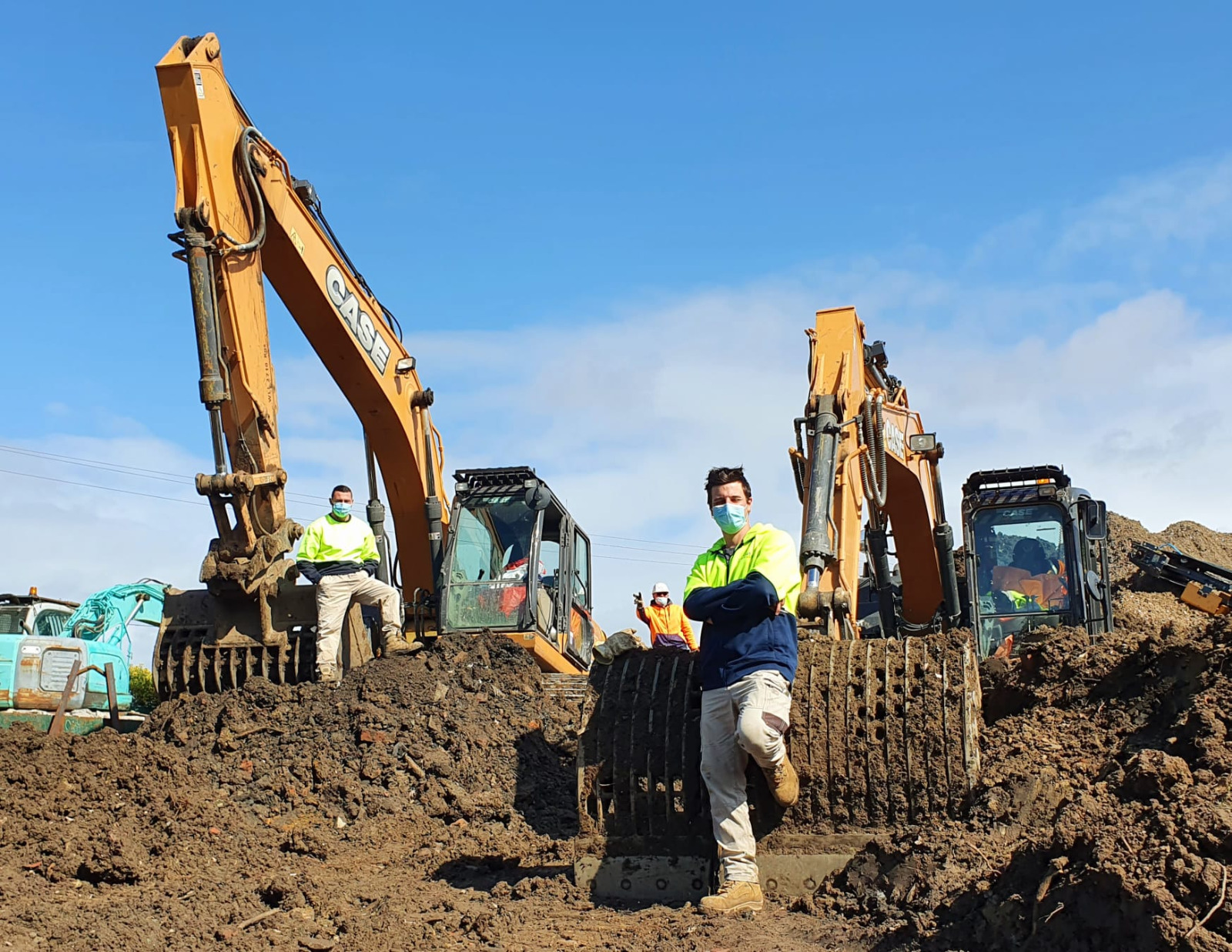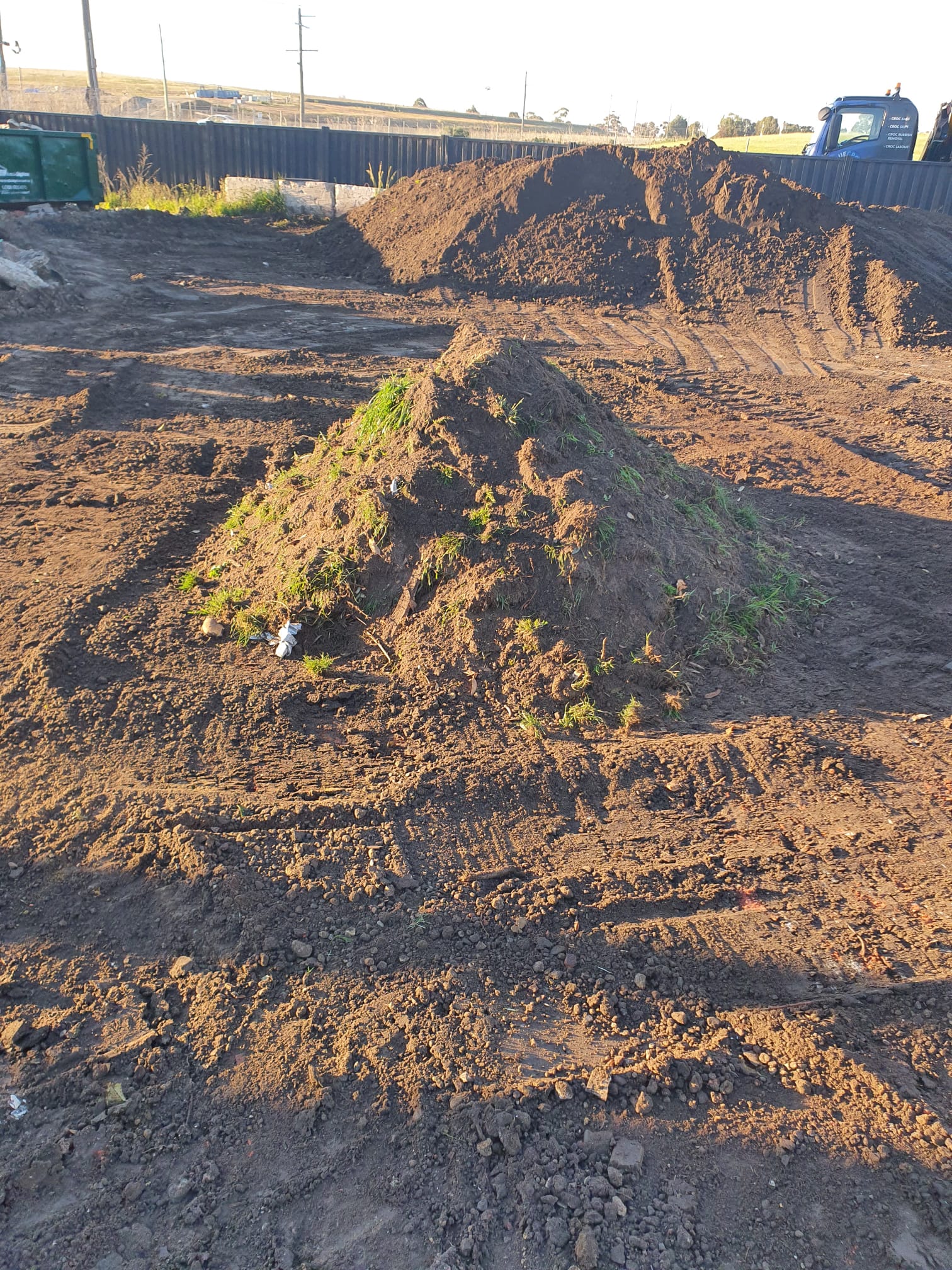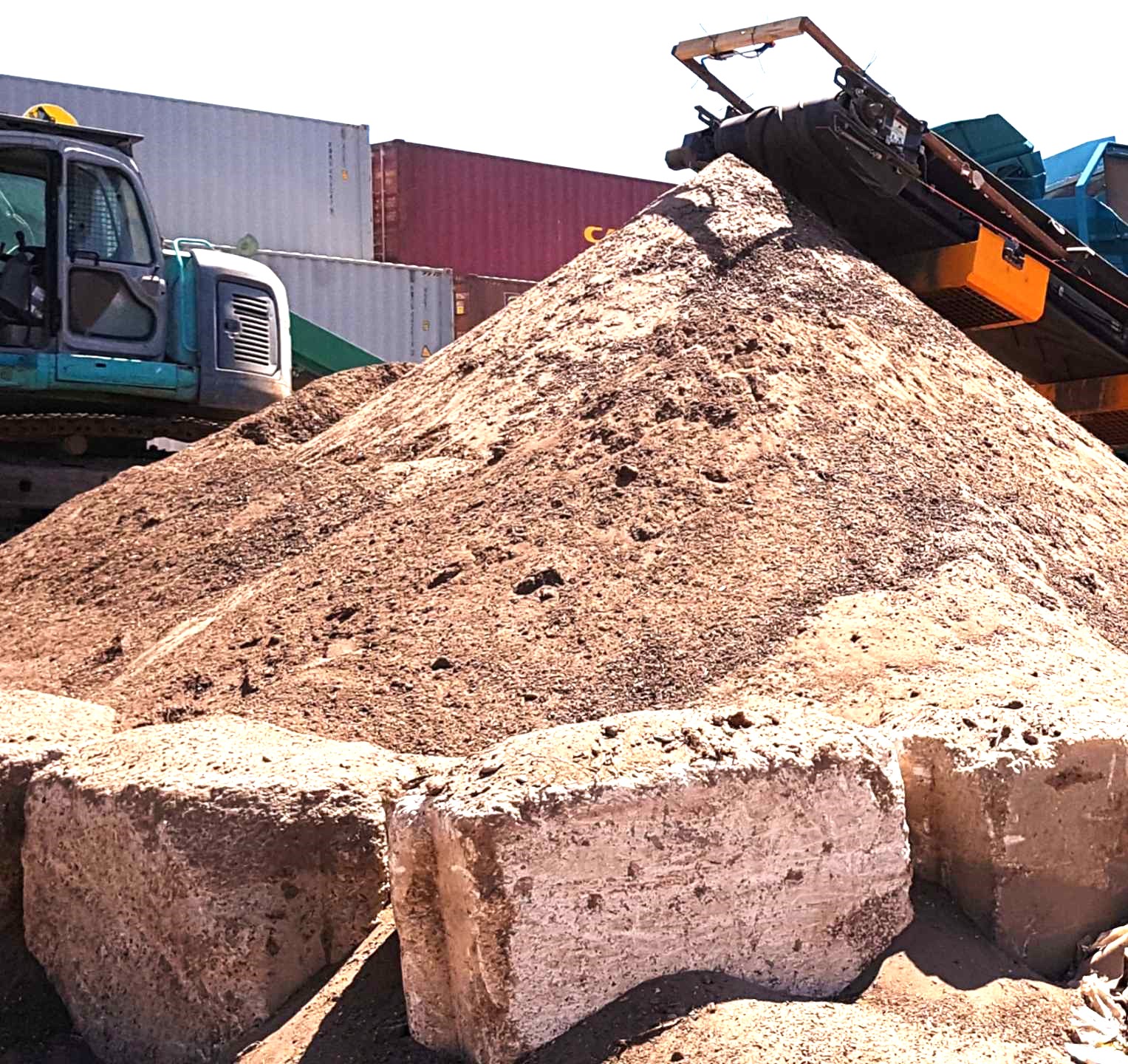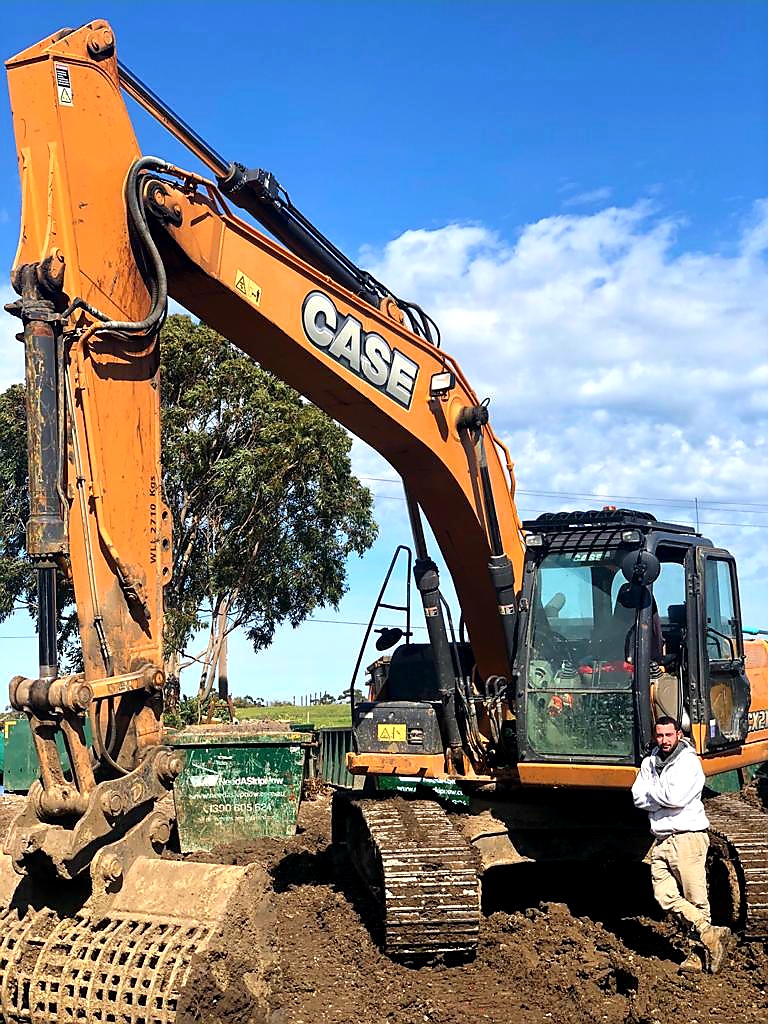5 Ways to Tell if Your Soil is Contaminated | Need A Skip Now
5 Ways to Tell if Your Soil is Contaminated For Builders & Landscapers

Soil contamination is a serious issue that can affect the health of people and the environment. It’s especially important for builders, landscapers, demolishers, and renovators who often come into direct contact with soil.
Understanding soil contamination and knowing how to identify it can help protect you, your team, and your clients from potential harm.
In this blog post, we’ll guide you through the process of identifying soil contamination and what steps you can take to legally dispose of it.
Table of Contents
-
Introduction
- The importance of soil contamination awareness for builders and landscapers.
-
What is Soil Contamination?
- Understanding the causes and types of soil contamination.
- Common contaminants like PFAS, pesticides, nitrates, lead paint, and asbestos.
-
What is Potentially Contaminated Land?
- Defining potentially contaminated land according to EPA Victoria Guidelines.
- Examples of previous land uses that may render land contaminated.
-
Why You Must Check Soil for Contamination Before Disposal
- The importance of checking soil for safety and environmental reasons.
- Risks associated with unchecked soil contamination.
- Legal responsibilities and the role of the EPA.
-
Step-by-Step Instructions to Work Out if Your Soil is Contaminated
- Detailed steps for identifying soil contamination.
- Visual inspection, historical research, soil testing, result interpretation, and remediation planning.
-
Key Considerations For Successfully Identifying Soil Contamination
- Understanding the variability of soil contamination within a site.
- The importance of laboratory testing for accurate results.
- Classification of contaminated soil into categories for disposal.
-
How to Dispose of Contaminated Soil in Melbourne, Vic
- Legal requirements for disposing of contaminated soil in Melbourne.
- Classification of soil by hazard category and disposal options.
- The prohibition of disposing contaminated soil in skip bins.
-
Alternatives to Identifying Soil Contamination Yourself
- The option of hiring environmental consultants for professional assessments.
-
Wrapping Up and Our Experience With Identification of Contaminated Soil
- Emphasizing the significance of soil contamination awareness.
- The commitment of Need A Skip Now to responsible soil management.
What is Soil Contamination?
Soil contamination, also known as soil pollution, occurs when human-made chemicals or other alterations disrupt the natural soil environment. This typically results from industrial activity, agricultural chemicals, or improper waste disposal. Contaminants can include petroleum hydrocarbons, solvents, pesticides, lead and other heavy metals.
natural soil environment. This typically results from industrial activity, agricultural chemicals, or improper waste disposal. Contaminants can include petroleum hydrocarbons, solvents, pesticides, lead and other heavy metals.
In other words, soil contamination happens when liquid or solid waste infiltrates soil or groundwater, leading to chemical or microbial disruptions. Due to human or industrial activities, the following chemicals can render soil contaminated:
- PFAS
- PESTICIDES
- NITRATES
- LEAD PAINT
- ASBESTOS
What is Potentially Contaminated Land?
According to EPA Victoria Guidelines, potentially contaminated land is:
- Land, which is currently or previously been used for industry or mining
- Land, which is currently or previously been used for the storage of chemicals, gas, waste, or liquid fuel – other than minor above-ground storage that is ancillary to another use of the land, or
- Land, where a past or present activity or event occurring on or off the land may have caused contamination on the land.
Some examples of previous land use, that will render land contaminated, include but are not limited to:
- Abattoir
- asphalt manufacturing
- automotive repair/engine works
- breweries/distilleries
- dry cleaning
- fertiliser manufacture or storage
- fuel storage depot
- pest control depots
- printing shops
- service stations/fuel storage
Therefore, if developing a land, that was previously used for one of the above purposes or other industrial purposes, it is critical to engage in testing the soil before commencement of any development.
Why You Must Check Soil for Contamination Before Disposal
As builders and demolishers, dealing with excavated soil is a day-to-day task. But here's the kicker:
- Safety First: Unchecked soil can be a silent health hazard. Some contaminants are instantly dangerous, like gases that might ignite. But others, if people are exposed over time, might lead to health issues, including cancer.
- Repurposing Land: Let's say an old factory site is now set to be a new family home or a playground. Before diving into the construction, you need to ensure that the ground is clean, especially to meet standards
 like those in the Victorian Planning System.
like those in the Victorian Planning System. - Contaminants on the Move: Here's the thing about nasty contaminants: they wander. They can:
- Drift through the soil and underground water paths.
- Make their way into crops and the wider ecosystem.
- Even journey from their starting point, ending up in far-off lakes or rivers.
- Disposal Protocol: If your soil is contaminated, there is a very different disposal route that you need to take, compared to the disposal of clean soil.
If you accidentally mix contaminated soil with clean batches, the costs can skyrocket. Not just in monetary terms, but it could also taint water resources. This is why it's not just about building; it's about responsible building.
Moreover, if you're in Victoria and you come across contaminated soil, you've got duties. Ignoring these duties doesn't just risk a hit to the wallet. The EPA can step in and make you clean up the mess. So, always better to be proactive.
Step-by-Step Instructions to Work Out if Your Soil is Contaminated
Identifying soil contamination involves several steps:
Step 1: Visual Inspection
Look for any unusual colours, textures, or odours in the soil. The presence of oil sheens or unusual debris could indicate contamination.
Step 2: Historical Research
Investigate the history of the site. Previous industrial use or waste disposal could have led to soil contamination.
Step 3: Soil Testing
Collect soil samples and have them analysed by a certified laboratory. This will provide a detailed report, classify your soil and determine the next steps.
Step 4: Interpretation of Results
Interpret the results with the help of an environmental professional. They can help you understand what the results mean in terms of health and environmental risks.
Step 5: Remediation Plan
If contamination is found, develop a remediation plan. This could involve removing the contaminated soil or treating it to reduce the levels of contaminants. For instance - Category A soil must be remediated first before being accepted into any facility.
Key Considerations For Successfully Identifying Soil Contamination
Remember that soil contamination can vary greatly within a site.
Also, keep in mind that some contaminants may not be visible or detectable by smell.
If the site has a history of industrial use or you believe that it might, it’s important to take samples of soil from various parts and various depths of the site and take them to a specialised laboratory for testing.
Once the report is received, you’ll know what category of the prescribed waste your soil belongs to. For instance, Category A soils (the highest class of hazardous waste) cannot be disposed of in landfill. Categories B and C soils can only be disposed of at licensed facilities.
How to Dispose of Contaminated Soil in Melbourne, Vic
If you’ve determined that the soil on your site is contaminated, you need to take appropriate measures for legal disposal.
In Melbourne, Victoria - contaminated soil MUST be classified first, before being transported or accepted by any facilities (according to Environmental Protection Regulation 2021). According to the EPA, you must classify contaminated soil by hazard category to determine which facility is licensed to accept it. If the soil does not meet the acceptance criteria, further treatment or stabilisation will be required.
Once you know which classification your soil falls under, it will dictate where and how you can dispose of it.
Category C and Category B Contaminated soil can be accepted at a landfill or facility licensed by EPA to accept such waste.
Category A Contaminated soil will require treatment to reduce or control the hazard before meeting acceptance criteria for disposal at an appropriate EPA-licensed facility.
Under no circumstances you can dispose of contaminated soil via a skip bin. Most Skip Bin Hire companies are not licensed to transport or process contaminated soil.
You can contact the EPA for a recommendation of a licensed operator to transport or remediate your waste or you can do an independent research. Some companies, which are licensed to transport contaminated soils are:
- AAH Contracting, here’s a link to their website.
- Eastern Plant Hire, here’s a link to their website
Alternatives to Identifying Soil Contamination Yourself
If you’re not comfortable identifying soil contamination yourself, consider hiring an environmental consultant. They have the expertise to conduct thorough site assessments and interpret laboratory results.
Wrapping Up and Our Experience With Soil Disposal
Identifying and managing soil contamination is a critical responsibility for builders, landscapers, and renovators in Melbourne and beyond. Ensuring soil is free from harmful contaminants not only protects the health of people and the environment but also ensures compliance with regulations.
.png)
As highlighted in this blog post, recognizing soil contamination involves a systematic process, from visual inspection and historical research to thorough soil testing, result interpretation, and the development of a remediation plan if necessary. It's imperative to engage an environmental professional when dealing with potential soil contamination to ensure accurate assessments and appropriate action.
Contaminated soil can NEVER be disposed of via hiring a skip bin or tipping your trailer or truck at a waste transfer station. Contaminated soil can ONLY be transported by an EPA licensed operator and into licensed facility, that specialises in soil remediation and processing.
Moreover, the importance of proper disposal cannot be overstated. The Environment Protection Regulations 2021 in Melbourne outline strict guidelines for disposing of contaminated soil, depending on its hazard category. Failure to adhere to these regulations not only carries financial implications but also poses a risk to the environment.
In the end, responsible soil management is not just a professional obligation; it's a commitment to the well-being of communities and the preservation of the environment. At Need A Skip Now, we prioritize these principles by only accepting clean, non-contaminated soil in our skip bins and waste transfer station. Every project is unique, so always approach soil management with diligence, taking into consideration the specific conditions of each site. By doing so, you contribute to safer construction practices, healthier surroundings, and a sustainable future.